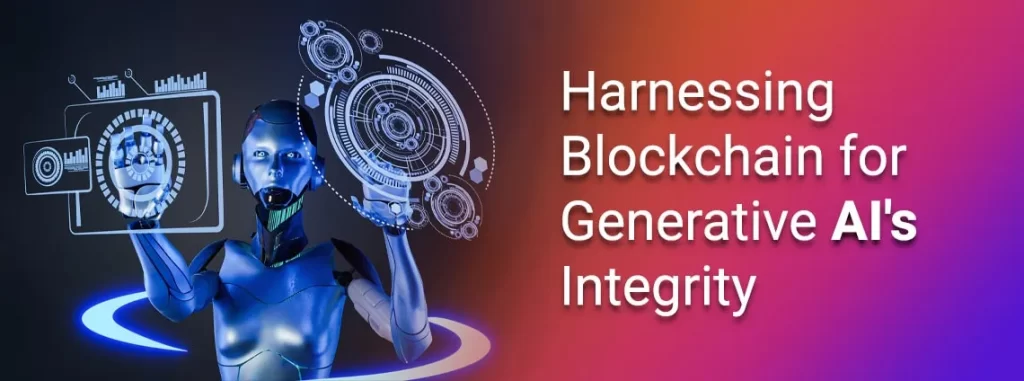
The Elephant in the Code: Harnessing Blockchain for Generative AI's Integrity
Faisal Aziz Ullah
Artificial intelligence, generative AI shine as a new frontier of creativity, spanning art, literature, and complex data analysis. Yet, a significant, often overlooked challenge threatens its potential: the integrity of the prompts that guide AI in generating content. This “elephant in the code” raises questions about the security and authenticity of these prompts, which are crucial for producing reliable AI outputs.
Understanding Prompt Integrity
Generative AI prompts form the foundation of AI’s creative capacity, directing it to produce everything from textual content to artistic creations. However, the integrity of these prompts is paramount. Compromises, whether through tampering or misinformation, can lead to biased outputs or vulnerabilities, underscoring the necessity for robust solutions to ensure prompt authenticity.
We Knew It Was Just a Matter of Time
Recent research has demonstrated risks associated with compromised prompts. For example, a study from Luxembourg Tech School showed how malicious actors could manipulate the prompts fed into generative AI models to indirectly launch cyberattacks. By generating harmful content through proxies, attackers can potentially operate at greater distance while still directing AI systems to carry out nefarious activities. This highlights the pressing need to secure prompt integrity.
Emerging Challenges
The prevailing methods for securing communications channels, such as VPN and or dependant on the browser with SSL/TLS, fall short of the durable protection required for safeguarding generative AI prompts. Surprisingly, many experts have yet to focus on this pressing issue, leaving major gaps in security. A stark illustration of the risks was presented at the BlueHat security event, where crafted prompts demonstrated the potential for misuse in generative AI, spotlighting the urgent need for secure, transparent, and verifiable solutions.
Blockchain: An Unexpected Hero
Despite the diminished buzz around NFTs, blockchain technology remains a potent force for innovation, particularly in ensuring digital authenticity. By applying principles similar to NFTs, blockchain offers a novel approach to address the prompt integrity dilemma.
This method involves tokenizing AI prompts, anchoring their metadata on a blockchain for a tamper-proof record of origin, ownership, and usage history. The immutable nature of blockchain allows for transparent verification of prompt sources and changes, while smart contracts facilitate the automated governance of usage rights, enhancing the security and compliance of AI-generated content.
The integration of blockchain between users’ applications and Large Language Models (LLMs) presents technical challenges, necessitating a middleware solution that doesn’t compromise user experience. Additionally, creating an economic model that benefits all stakeholders and justifies the costs associated with blockchain transactions is crucial. Finally, a collaborative effort across disciplines is required to navigate the legal and regulatory frameworks needed for this innovative approach.
Benefits of Blockchain for Prompt Integrity
Leveraging blockchain delivers multiple advantages that aren’t easy to reproduce elsewhere:
1- Immutable prompt version control for origin authentication
2- Public transparency into prompt changes and access
3- Usage terms enforcement via smart contracts
4- Automated licensing and permissions built-in
5- Tamper-resistant audit trail of model interactions
This combination offers generative AI a foundation of trust and accountability unmatched by existing security protocols.
Overcoming Barriers
Realizing the potential of blockchain does face hurdles. The integration between end user applications and AI models creates complexity. Middleware solutions are needed so blockchain interactions remain seamless to users. Additionally, the economics must be viable for commercialization, which may require ecosystem partnerships and incentive structures. Finally, regulatory uncertainty will need to be navigated through coordinated efforts across technology, legal, and compliance domains.
While challenging, none of these obstacles are insurmountable given blockchain’s immense promise. Partnerships across industries and proactive communication with policymakers can pave the way for adoption.
Towards Trustworthy AI
The application of blockchain technologies, drawing inspiration from NFTs, have real promise to revolutionize the integrity dilemma of generative AI prompts. This not only ensures the authenticity and security of AI-generated content but also paves the way for ethical and reliable AI applications. It calls for interdisciplinary collaboration among AI developers, blockchain experts, and governance stakeholders to explore and implement this solution, ensuring the foundational security of generative AI. The tech community must further explore blockchain’s potential, fostering a landscape of trustworthy and ethical AI.


